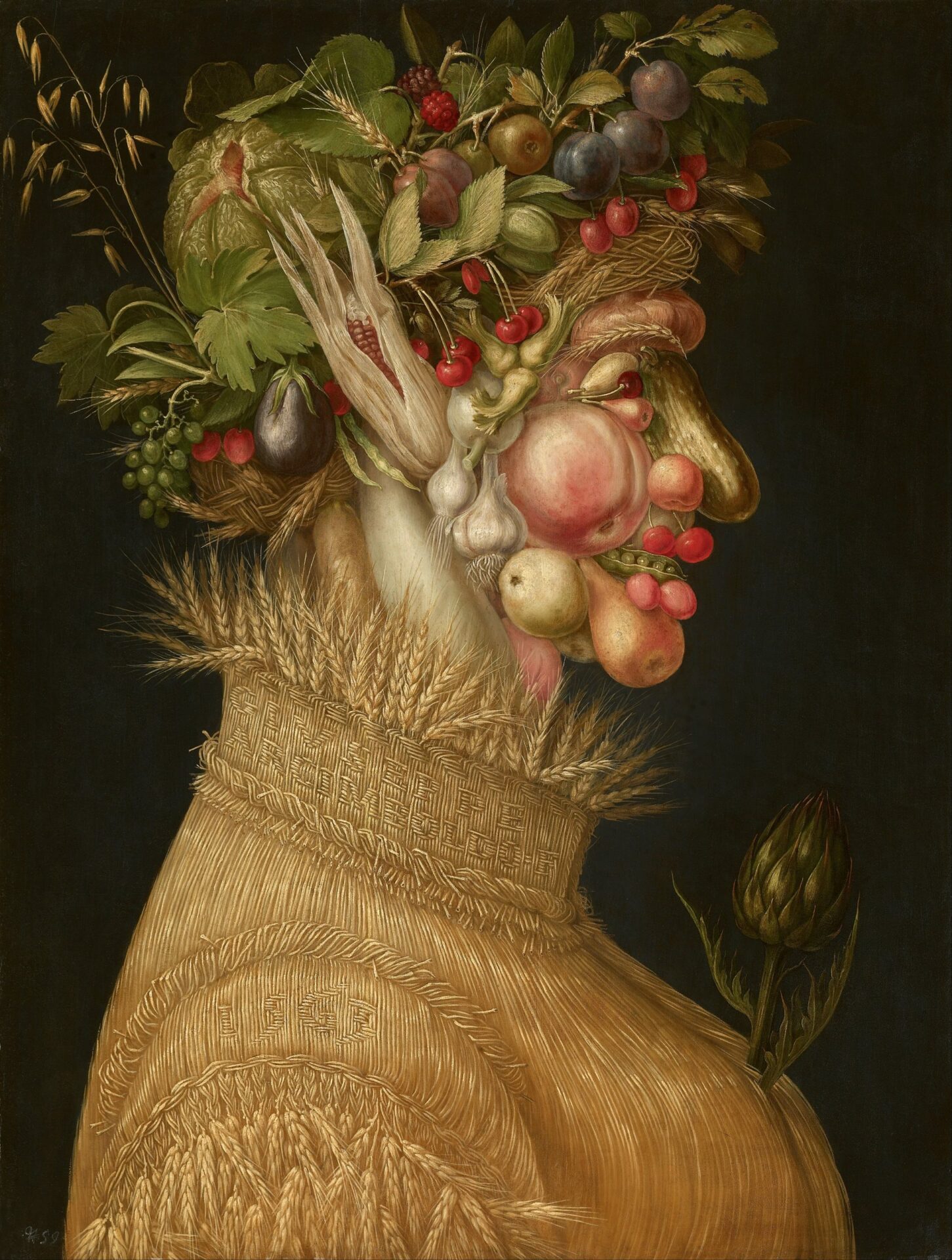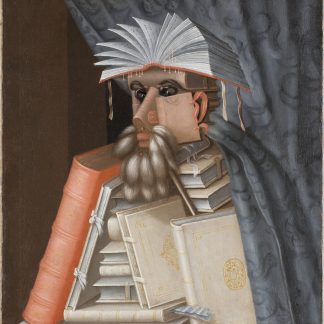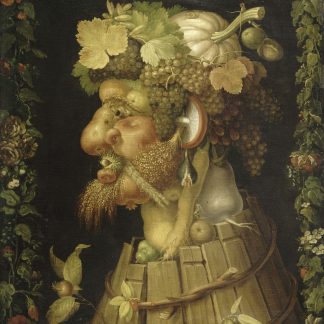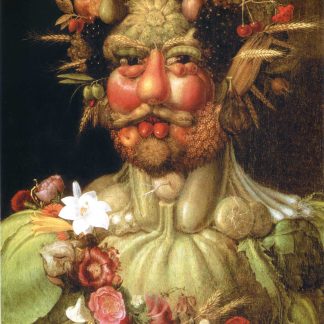Description
The set was accompanied by a poem by Giovanni Battista Fonteo (1546-1580) explaining their allegorical meaning. Summer is depicted by a woman who, unlike Spring, is facing right and is made up, not of flowers, but of fruits and vegetables. Cherries adorn the border of her hair and also make up her upper lip; her cheek is made of a peach, her nose of a cucumber, her ear of an eggplant and her eyebrow of an ear of wheat. Her dress is made of straw, with, on the Louvre copy, the inscription GIUSEPPE ARCIMBOLDO F (F standing for FECIT) on the collar and the year 1573 on the shoulder. An artichoke decorates her chest.
Only Winter and Summer survive from the original work – these are now in the Kunsthistorisches Museum in Vienna. The Louvre has a full set of the copies made by the painter for Maximilian to send to Augustus of Saxony – these have a floral frame not used in the original version. Spring also survives from a set copied for Philip II of Spain – it is now in the Real Academia de San Fernando in Madrid.
Bibliography
The Four Seasons (Arcimboldo), https://en.wikipedia.org/w/index.php?title=The_Four_Seasons_(Arcimboldo)&oldid=1078539626 (last visited Aug. 5, 2022).







